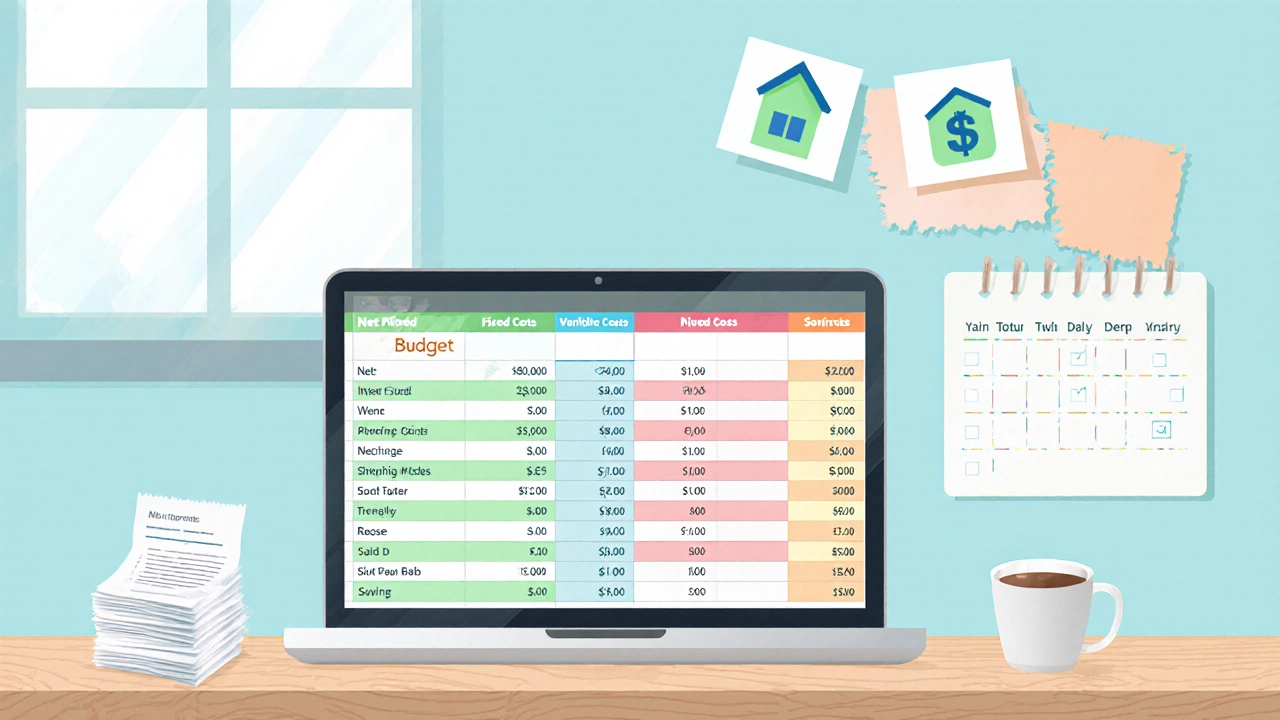Budget Cash Flow Calculator
When it comes to personal finance, Budgeting is the process of planning how you’ll allocate your income to cover expenses, savings, and financial goals. Everyone asks, "What is the number one rule of budgeting?" The answer is simple yet powerful: spend less than you earn. In other words, keep your total outflows lower than your total inflows every month.
Quick Takeaways
- Rule #1: Spend less than you earn.
- Track every Expense to know where money goes.
- Prioritize Income sources and boost them when possible.
- Allocate a portion to Savings before paying non‑essential costs.
- Use a budgeting method that matches your lifestyle.
Why “Spend Less Than You Earn” Is the Core Rule
This rule works because it directly addresses cash flow, the lifeblood of any financial plan. Cash Flow is the difference between money coming in (Income) and money going out (Expense). If your cash flow stays positive, you can cover mandatory bills, save for emergencies, and invest for the future.
When cash flow turns negative, you either dip into credit, incur Debt, or scramble to cover essentials. Both outcomes increase financial stress and erode long‑term wealth.

Breaking Down the Rule Into Actionable Steps
- Calculate Your Net Income. Add salary, freelance pay, dividends, and any other cash you receive after taxes.
- List Every Expense. Include rent, utilities, groceries, subscriptions, and even occasional coffee. Use a spreadsheet or a budgeting app to capture each transaction.
- Separate Fixed and Variable Costs. Fixed costs (rent, loan payments) stay the same each month; variable costs (food, entertainment) fluctuate. Knowing the split helps you spot savings opportunities.
- Set a Savings Target. Aim to stash at least 10% of your net income into a high‑yield Savings account before you allocate money to discretionary items.
- Adjust Expenses to Keep the Gap Positive. If total expenses exceed income, trim variable costs first-downgrade streaming plans, cook at home more, or shop sales.
- Track Progress Weekly. Review your budget every 7days. Small nudges keep you on track and prevent surprises at month‑end.
Following these steps ensures you live within your means while still moving toward your Financial Goal, whether that’s a house deposit, a vacation, or early retirement.
Common Pitfalls and How to Dodge Them
- Ignoring Small Purchases. A daily latte adds up. Treat every sip as an Expense and decide if it’s worth the joy.
- Not Updating the Budget. Life changes-salary bump, moving costs, new child. Refresh your numbers each time a major shift occurs.
- Relying on Guesswork. Estimate with real data. Export bank statements, categorize them, and base your budget on actual spend patterns.
- Over‑saving at the Expense of Fun. A budget that feels like a punishment will break. Allocate a modest “fun fund” to keep morale high.
Choosing a Budgeting Method That Fits the Rule
| Method | Core Principle | How to Allocate | Best For |
|---|---|---|---|
| Zero‑Based Budgeting | Every dollar has a job | Income = Expenses + Savings + Debt Payments | Detail‑oriented planners |
| 50/30/20 Rule | Simple percentage splits | 50% needs, 30% wants, 20% savings/debt | Beginners needing quick setup |
| Envelope System | Cash envelopes for categories | Physical cash placed in envelopes per category | People who struggle with overspending on cards |
| Pay‑Yourself‑First | Prioritize savings before bills | Set aside a fixed % of income, then cover expenses | Those focused on building emergency fund fast |
No matter which method you pick, the #1 budgeting Rule-spending less than you earn-remains the baseline. The method simply offers a framework to make that rule practical.

Tools and Resources to Simplify the Process
Digital apps like YNAB (You Need A Budget), Mint, or EveryDollar automate tracking, categorize expenses, and send alerts when you’re nearing limits. For cash‑lovers, printable envelope templates or a simple spreadsheet can do the trick.
Consider a Savings account with a competitive APY (at least 2‑3% in 2025) to make your retained cash work harder.
Next Steps & Troubleshooting
If after a month you still see a negative cash flow, revisit step3 above: are your variable costs inflated? Try the 30‑day rule-delay any non‑essential purchase for 30 days and see if the urge fades.
Stuck with high Debt interest? Prioritize a debt‑snowball or debt‑avalanche strategy before expanding your savings rate.
Finally, celebrate small wins. Paying off a $50 credit‑card bill or hitting a $500 emergency fund milestone reinforces the habit of living below your means.
Frequently Asked Questions
What if my income fluctuates month to month?
Base your budget on the lowest expected monthly income. When you earn more, funnel the surplus into savings or debt repayment.
Is the 50/30/20 rule enough to guarantee I spend less than I earn?
It’s a guideline, not a guarantee. If your actual expenses exceed the 50% allocation, you’ll still overspend. Pair the rule with tracking to verify compliance.
How much should I keep in an emergency fund?
Aim for three to six months’ worth of essential expenses. If your job is unstable, lean toward six months.
Can I use credit cards and still follow the #1 budgeting rule?
Yes, as long as you treat credit‑card payments as regular expenses and pay the full balance each month to avoid interest.
What’s the best way to track expenses without an app?
A simple notebook or a printed ledger works. Record every transaction, categorize it, and total the columns at week’s end.

